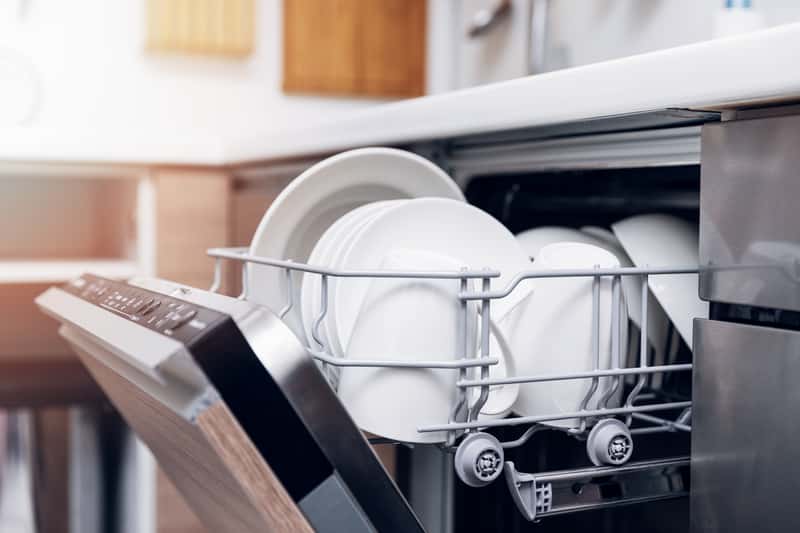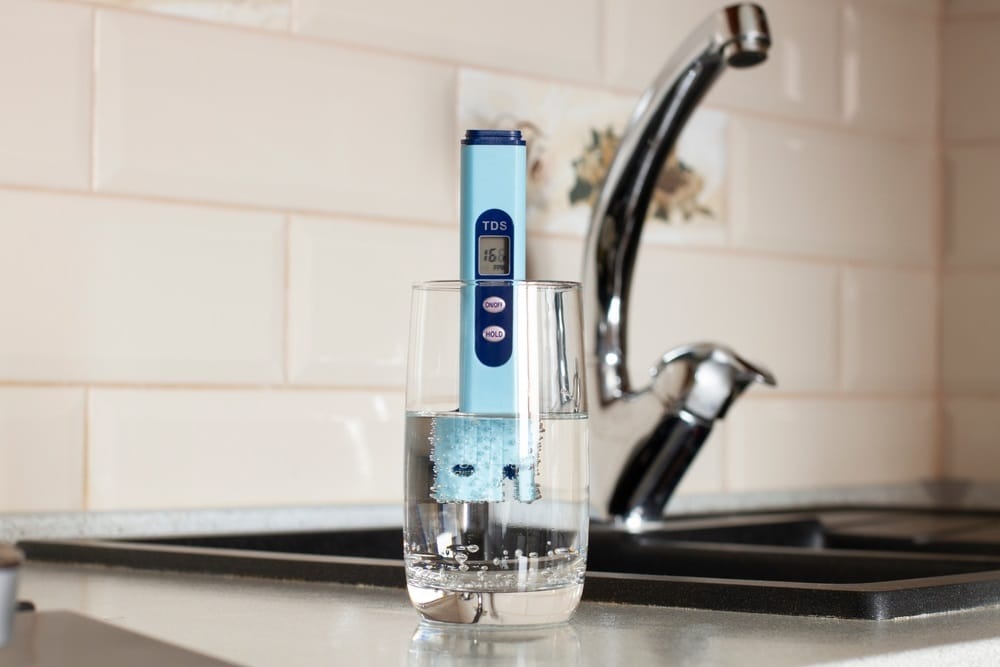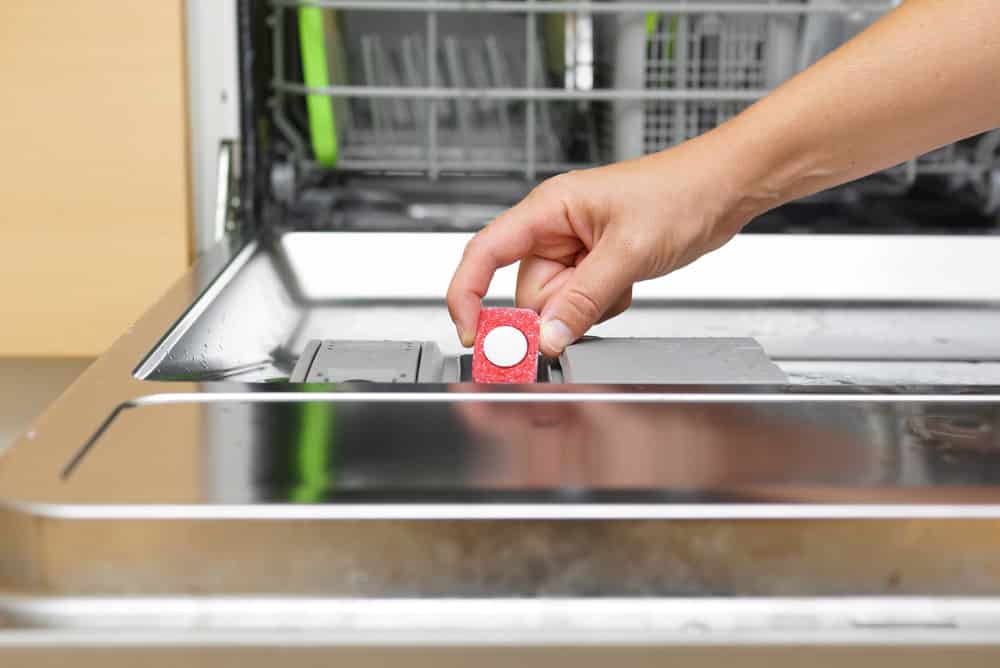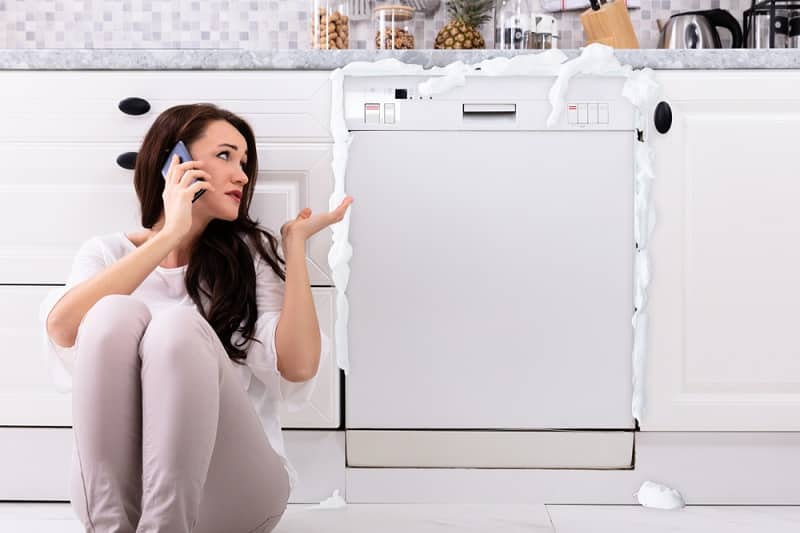
Dishwashers are a great convenience to have and for many busy families today, they have become indispensable.
Our grandmothers would have been amazed at how, instead of having to handwash and rinse everything, one can simply pack the dishes into a cabinet and switch it on!
Using The Dishwasher Correctly
Before we get into why your dishes may still have soap residues on them, let’s make sure you’re packing and using the appliance correctly.
- There really is no need to pre-rinse the dishes. This is a waste of time, water, and energy. Simply scrape any excess food into the bin and load them in.
- Don’t overload the machine. It is better to do two loads and end up with sparkling clean, dry dishes than try to squeeze too many things in.
- Make sure the items aren’t touching one another. Spoons and bowls especially should not nestle together. The water needs to be able to get between them. This means that they will be properly rinsed too, leaving no soap residue.
- Use the correct amount of detergent. Measure it according to the instructions on the packaging. There is no need to fill the entire container in the dishwasher as this may lead to overdosing and soap residues. Plus, it’s wasteful!
Why Do My Dishes Taste Like Soap After Dishwashing?
Now, let’s get into today’s issue – your dishes taste like soap after being in the dishwasher. Here are 5 possible reasons:
1. Hard water
Hard water makes it difficult for many detergents to do their jobs. The minerals in the hard water combine with the detergent and leave a precipitate called soap scum that is difficult to rinse off.
If your water is hard, you’re going to need to look at getting some kind of filter system set up to soften the water before it goes into your machine.
2. Using the wrong soap
Another common problem that could be causing your dishes to taste like soap after you take them out of the dishwasher has to do with the type of soap that you are using in the dishwasher.
Some soaps are made to be perfectly compatible with the dishwasher, and they are dispensed in the right proportions when you are using them with an automatic dishwasher.
Using regular dishwashing detergent or other soap in your dishwasher will damage the machine and your dishes will not be properly cleaned.
Always use a detergent specifically formulated for dishwashers. There are several on the market ranging from powders to liquids to tablets.
Even if you are using a designated dishwash detergent, some of the cheaper generic brands leave a soapy aftertaste. Invest in a better brand and enjoy spotlessly clean dishes with no soapy taste.
3. Dirty soap container
Check the soap container on the machine to make sure it isn’t clogged up or perhaps leaking. If you think it is dysfunctional, call in a repair person to sort it out. Also, ensure that you are putting the detergent into the right compartment.
Are you maybe putting it into the rinse aid container instead? This would cause the soap to be released during the rinse cycle, giving your dishes a soapy taste.
Dishwashers have many moving parts and sometimes soap can build up and get stuck inside these parts such as inside the tub, on the heating element, or inside the moving arms. This is especially true if your machine isn’t heating up as it should.
This will cause the detergent to not dissolve properly. You are more likely to have problems like this if your appliance is old.
Check that the heating element is still working and that the water is, indeed, being heated during a wash cycle. To be effective, the water needs to reach 130 degrees Fahrenheit.
If you suspect that there is some soap residue left inside the machine, run it through a hot cycle with no load and no detergent. Another good way to clean your dishwasher is to sprinkle the bottom of the tub with powdered citric acid.
Put a bowl containing 750 ml of white vinegar on the top rack. Run the machine through a hot cycle.
When this is done, sprinkle a cupful of baking soda onto the bottom of the tub and run another hot cycle. Your dishwasher will be sparkling clean with no traces of soap residue.
5. Dirty filter
Every now and again you need to remove the filter at the bottom of the tub. Some brands are screwed in so you’ll need to unscrew it to remove it.
Give the filter a good wash and brush it with an old toothbrush to remove debris. This will get rid of any soapy residue that may be tainting your dishes. Remember that some models have more than one filter so check the user manual.
We hope our troubleshooting guide will help you to solve your soapy dishes problem. Please let us know how it goes in the comments section below!
and if you take care of it accordingly, it will serve you well in the longer run.


